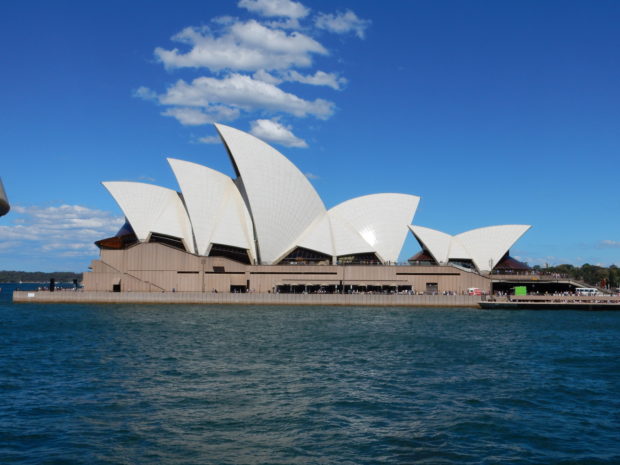We have much more to do and your continued support is needed now more than ever.
Sydney World Parks Congress: Charting the Future of Nature

Climate on Center Stage
Climate change, for the first time, has been a major topic of consideration at the Parks Congress, both in terms of the role that protected areas can play as part of a solution to moderating the greenhouse gases that are the root cause of climate change, as well as the challenges of managing these areas in the face of increasing climate-related impacts. News of a carbon reduction agreement between the United States and China coincided with the opening of the Congress, and the agreement offered delegates further hope for the future of protected areas and the wildlife they sustain.
My participation at the Congress focused especially on the “climate-change stream” during which participants from around the world shared ideas and opportunities for adapting to the challenge of climate change and enhancing the resilience of parks, wildlife, and the communities that depend on them. As part of this work, I was honored to help author a new IUCN best practices guide on climate change and protected areas, which was released as a consultation draft at the Congress, and can be viewed here. I was heartened to see the broad agreement among Congress participants about the need to respond to the challenges of climate change in a thoughtful and considered way, and to adopt new ways of thinking about conservation designed to sustain the values and services these areas provide in the face of transformational climatic changes that are underway.
How Much is Enough?
One of the most hotly debated topics at the Congress was the question of how well the current system of protected lands and waters are conserving nature, and what should be the target for protecting additional areas. The Convention on Biological Diversity currently has a target goal for nations of protecting 17% of terrestrial areas and 10% of marine regions. Since the last Congress in 2004 there has been tremendous progress in expanding the conservation estate, and a new analysis by the United Nations Environment Programme finds that the world is on track to meet the terrestrial target, with an estimated 15.4% of terrestrial and inland waters now in protected status. There also has been tremendous progress in the establishment of new marine protected areas over the past ten years, although just 3.4% of the global oceans are yet protected. Despite this positive news, however, it is clear that not all ecosystems and species are well-covered in the existing set of protected areas, and there is a need to improve the representation of these ecological resources in our parks. Additionally, delegates widely recognized that the 17% target designated in the international biodiversity convention is not based on scientific evidence for what is needed, but rather was a politically negotiated figure. As a result, an active area of discussion at the Congress has been how much is truly needed to protect nature, with some arguing that scientific evidence suggests that “nature needs half.”
Sustaining People, Reducing Disasters
Another major theme at the Congress has been the role of protected areas in helping to sustain human well-being, and reducing the risk to communities from natural disasters. Parks and protected areas increasingly are being viewed as providing important “ecosystem services” to communities, ranging from the provision of clean water to reducing the risks from hazards such as coastal flooding. The use of nature-based solutions to disaster risk reduction in particular was prominently featured at the Congress, including the release of a new book, “Safe Havens” that provides a series of case studies on the practice. Participants recognize that there is still much work to be done in understanding where such approaches are appropriate and how they may need to be used in concert with more traditional engineered approaches to risk reduction. Nonetheless, it is noteworthy that protected areas are now being looked to as key assets for people and communities, and important for sustaining livelihoods, contributing to healthy populations, and serving as important adaptive responses for the impacts of climate change.
The Promise of Sydney
As I write this, the final plenaries of the Congress are unfolding, which will culminate with a visionary statement for the future known as the “Promise of Sydney.” Intended to present a bold statement that incorporates recommendations for the changes needed in the coming decade to enhance implementation of conservation and development goals around the planet. The Promise will reflect and synthesize recommendations coming from each of the various Congress streams, including the “Responding to Climate Change” stream in which I participated. Although the final wording is still being hammered out, based on what I have seen at the Congress this past week, the future for parks and protected areas around the world is, despite many serious problems, bright indeed.





















